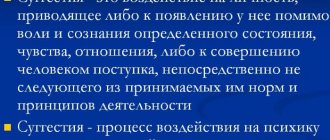.
One type of suggestion—instant hypnosis—is encountered by many people in everyday life. Some of them are not aware of such an impact, but use the technique independently on an unconscious level. In medicine, it is often used to treat seriously ill patients who require long-term rehabilitation. Significant factors in hypnotic manipulation are intonation and tempo of the voice.
Areas of application of instant hypnosis
Instant hypnosis differs from the classical technique in the speed of obtaining the desired result. With the help of a special lightning-fast hypnosis technique, unlimited influence is exerted on consciousness. A person is put into a trance state in 2–3 minutes.
Experienced practitioners are able to hypnotize people under different conditions and for a short time. This method is characterized by the use of various effective techniques. They help provoke confusion, loss of control over one’s actions and thoughts, and a state of shock.
The technique of instant hypnosis can be learned. There are a huge number of life circumstances in which the acquired knowledge can be useful. Specialists in various fields of activity use technology to convey their own thoughts and desires to their interlocutor.
These are social workers, lawyers, doctors, teachers, businessmen. They regularly communicate with other people who have a certain social status. This type of hypnosis is often used in advertising or trade.
In these areas of activity you have to direct or subordinate your client. The instant hypnosis technique will definitely come in handy for parents who are trying to find contact with teenagers. Suggestion will help regulate relationships and come to a common opinion.
What can self-hypnosis be used for?
Everything is the same as what I wrote above, but here’s a little more detail. I believe that a person is a little understudied in terms of the psyche and his resources. I am sure that a person has all the strength to become more successful, richer, has self-healing skills, spiritual past lives (if you believe in them).
Let me tell you about my experience, why I used self-hypnosis. I remember once I lost the TV remote control, I couldn’t find it for half a year. Not at all, I remember the last time I used it and that’s it. And then he just disappeared.
Read more: How to get rid of guilt
And so, I lie down on the bed, set the program to find bullets from the chick and the faster the better, I enter self-hypnosis for 30 minutes, completely switch off (yes, you can go deep like that), leave the meditative state and simply forget, and a week later I find my remote controller. Why in a week, I don’t know, but our unconscious needs time to rearrange the universe a little.
I really love self-hypnosis to quickly restore strength if I’m tired or haven’t slept much. In 30 minutes of rest, you feel as if you slept for 2-3 hours. For one thing, you can solve the problem while you are in self-hypnosis.
Blood pressure control? Yes Easy! We all experience changes in internal pressure and, accordingly, this makes us feel, to put it mildly, not very good. In self-hypnosis, you can ask your unconscious to equalize the pressure and improve your well-being.
I will warn, of course, that although working with the unconscious is a powerful tool, it is not a substitute for classical treatment.
The most important thing to work with the unconscious is psychotherapy. Healing from childhood traumas, I believe, is the most painstaking work on oneself if a person wants to achieve success, wealth and everything he wants. After all, if we don’t let go of everything that pulls us down from the past, it will be difficult to rise up.
Through communication with our inner self, it is easy to understand what we need. The main thing is to learn to listen to yourself, communicate with yourself, trust yourself and all the trump cards are in our hands.
Here we can describe for a long time why the unconscious can help us, but this is too long, we ourselves have plenty of resources, so we can experiment a little.
Nuances of use
Instant hypnosis has unlimited possibilities. It shows a high level of performance and apparent ease. The hypnotist will be able to achieve many of the goals.
Only a complete understanding of instant hypnosis will help you subjugate another person to your own will, force him to do actions that often do not correspond to the desires of the person being suggested. This type of hypnosis is distinguished by its complex execution. A novice practitioner will not be able to put a person into a trance using the quick hypnosis technique.
Many people make the mistake of thinking that instant hypnosis helps to change the character and habits of another person. Not a single programming technique sets completely new and unusual settings for the subconscious. This effect is only possible if a person himself wants to change by changing his thinking.
The presented technique does not help to completely impose your desires and will on other people. Hypnosis opens up enormous possibilities for the practitioner, but they are not limitless. Even when immersed in a deep trance, a person will not perform actions that may contradict common sense. Especially if internal installations pose a threat to life.
Practitioners must remember that rapid hypnosis can only influence people who are highly emotional and have a high degree of hypnotizability. They will respond quickly to installations. Phlegmatic people who lack a rich imagination cannot be hypnotized.
Stages of human exposure
If we look at the process of conversational hypnosis step by step, we can distinguish the following stages:
1. Attracting attention. Its task is to interest the individual and keep her curiosity. To do this, you can call your future interlocutor, address him by name, offer to look at something, touch him, etc. Only information that is important to a person will arouse his interest. The following factors will help with this:
- values (love, family, wealth...) - this list will definitely contain a couple of concepts that are significant for the individual, which means that he will listen to the hypnotist and maintain a dialogue;
- needs - what is important at the moment: food, accommodation, help, sex, etc.;
- emotions (will attract attention by the fact of surprise and cause mutual experience);
- changes: as mentioned above, a person is frightened by the unknown, so he will not be distracted from the new, unknown, his consciousness will instantly begin to analyze the risks for himself (this is inherent in instincts);
- consistency: intuitively, everyone looks for people who are similar to themselves, because they can be trusted, therefore the same poses, similar views on things, and gestures inspire trust in a partner.
2. Appeal to the human mind. You need to gain trust and put him into a trance. This can be done in different ways. They will be discussed further.
3. Suggestion. This stage is similar to a dotted line with a dot, where the dotted line is communication on main topics, and the dot is the ideas that need to be “introduced into the head” of the interlocutor. In other words, the hypnotist must talk about ordinary topics and periodically voice the desired thought, formulated in different ways. For example, the phrase “appoint me to this position” can be veiled as “I have connections in this area,” “I would work without lunch,” “I have developed new stages of enterprise development.” All these statements boil down to one thing: the person is clearly suitable for the specified position.
4. Hidden period (takes place inside the interlocutor). At this moment, the individual forms his own conclusions. He supports something, rejects something, and thus a decision is formed. The hypnotist's task is to facilitate the adoption of the desired position. The result cannot be predicted, and there is no need to rush it. The “shoots” of conversational hypnosis will become known over time, in the future. At this moment, you need to “mix up the tracks”, as if there was no suggestion, so a familiar voice and familiar intonations should sound. And if the interlocutor remembers only general information from the conversation and not a word of important information, this stage has been completed successfully.
5. Return of personality control. The main task is to complete the contact and prepare the ground for further communication (arrange a meeting, summarize the conversation). In order to return a person to consciousness, you can change the situation, voice, intonation.
Instant Hypnosis Techniques
The distinctive feature of this technique is that the person is immersed in a deep state of trance at a certain moment. The practitioner must evoke strong feelings. They can be positive or negative.
The effectiveness of instant hypnosis increases under the following conditions:
- unexpected joy;
- irritation;
- strong fear;
- doubt;
- uncertainty in making a specific decision.
Such states lead to the fact that a person begins to quickly plunge into a trance. His consciousness is partially shut down, leaving him unable to control his actions. Brain activity is involved in the processes of catalepsy.
While under hypnosis, you can give different instructions. The mentee can follow certain instructions, and the commands are perceived as an immutable truth. When attempts to challenge or comprehend information begin, the subconscious mind turns off.
There is a certain sequence for immersing yourself in a trance state using the instant hypnosis technique:
- gaining trust;
- to attract attention;
- creating a feeling of excitement;
- submission to one's own will;
- changing the habitual perception of thoughts and actions.
To achieve this goal, it is necessary to additionally use other techniques. The hypnotist selects images and words that promote vivid emotions. The result is severe stress or shock.
You can use sudden movements or sounds that cause fear. To quickly immerse yourself in a trance, entanglement of thought processes is used. The information must be mutually exclusive. There are several effective ways to help put a person into a state of rapid hypnosis.
- Classic Faria technique. This is a simple and affordable method that has worked well in practice. The person quickly falls into a trance state. You don't need much experience to use it. A hypnologist can have a good effect on people who have an increased degree of suggestibility.
- American method. When using this rapid hypnosis technique, the person is given instructions that are accompanied by a slow countdown of time. It takes 40 seconds to put you into a trance. The effectiveness of suggestion is about 93%.
To learn the American method of hypnosis, it is not enough to study various books or watch video tutorials. Theoretical knowledge provides only superficial information. For training you will need the help of a hypnotherapist.
The emergence of verbal suggestion techniques
At one time, Milton Erickson demonstrated that hypnotic influence can be carried out during communication unnoticed, using a certain set of tools. NLP specialists have adopted this method. Thus, the technique of verbal influence on human consciousness appeared.
Anvar Bakirov’s book “Conversational Hypnosis” is based on the theory of the above-mentioned psychotherapist. The author reveals in it his vision of the concept and the basic techniques of suggestion. He claims that the content of this source allows you to consciously conduct the communication process and achieve the desired changes in the behavior of the interlocutor.
Verbal suggestions
Such suggestions can be direct, indirect and open. If the therapist uses direct suggestion, his intentions are clear. The practitioner explains what he wants to achieve and what his goals are. Direct suggestion is often used during surgery when the patient cannot be given pain relief.
In the case of indirect suggestion, the specialist does not talk about the desired results. Actions will depend on the will of the other person. With indirect suggestion, clarity of thoughts is disrupted. This method is used in cases where it is necessary to direct a person to the path that he is avoiding.
To achieve maximum results, the double bind technique is used in most cases. A person is offered two options to choose from, which he will not be able to distinguish when immersed in a trance. In reality, these options are identical, so the person chooses from two identical offers.
To gain focus on a specific aspect, it is necessary to use the technique of suggestion with the absence of mention. The practitioner begins to list different situations without touching on important topics.
The result is an emphasis on attention. This type of suggestion opens up a wide choice of actions. Psychotherapists often offer several specific frames that you can fill out at your own discretion. This technique involves the use of mobilizing suggestions. In another case, the specialist will provide several answers to choose from.
Session outline.
1 step. Instill trust (in a preliminary conversation, through suggestibility tests, it doesn’t matter how).
Step 2. Separate consciousness and subconscious (in a smart way, cause dissociation, direct the client’s attention inward, so that the body is at rest and there is detachment in the head). Speech cords are used that are built into some method of trance induction. The main thing is to split consciousness, as happens when a person falls asleep.
Step 3. Place a suggestion in the subconscious in the form of a metaphor if the trance is light, or a command if it is deep enough. You can do both.
Nonverbal suggestions
To use the technique of suggestion on a non-verbal level, not words, but gestures are used.
There are several types of techniques:
- Catalepsy. The patient needs to take a forced position, which came from the hypnotist. There is catalepsy of the whole body or a separate part of it. It is not recommended to practice this technique frequently.
- Pauses. This is one of the important forms of nonverbal suggestion. With the help of short pauses, a specialist will be able to change the meaning of the conversation.
- Levitation. When using this technique there is no physical impact. The suggestible person uses his own imagination. The advantage of this type of hypnosis is that it is an easy process of immersion in a trance state.
Levitation is often used in self-hypnosis. In a state of hypnosis, you feel lightness, joy and comfort. For this reason, this technique is becoming more popular, but people may encounter various side effects.
If hypnosis was used to treat patients, then after the therapy session an allergy occurred on the skin, which was accompanied by a rash and severe itching. Studies have confirmed that these symptoms arise due to the weak psyche of patients. In addition, such hypnosis can cause central nervous system disorders.
CLOSE YOUR EYES!!!
Now everything is the same, but we imagine it.
We visualize any 1 item. Apple, car, Keanu Reeves 10-20 seconds
We remember any sound, meowing, a cow mooing, a dog barking, the voice of a favorite actor for 10-20 seconds.
We imagine any sensation, for example, how the wind blows in your face for 10-20 seconds.
We return to the visual, imagine 1 any object for 10-20 sec, 2 any object for 10-20 sec
Imagine any 2 sensations for 10-20 seconds.
And again we return to the visual part, present any 3 objects in turn for 10-20 seconds
Any sounds in turn for 10-20 seconds
Any 3 sensations in turn for 10-20 seconds.
Usually people fail here already. But in reality they just dive very deep. If before entering self-hypnosis you programmed yourself for the duration of the session, for example 30 minutes, then you will wake up exactly 30 minutes later. Marvelous.
✅Guide to changing yourself .pdf
Immersion in hypnosis
To hypnotize a person using instant hypnosis, you can use different methods of influence. The use of verbal formulations is typical. They help to describe in detail the sensations into which the suggestible person will be immersed. The practitioner can apply pressure to analyzers and strong stimuli. In the first version, the hypnotist begins to speak monotonously. In the second case, entering a trance is carried out using shock techniques and the power of words.
Practitioners can induce a hypnotic state by fixating on an object. The patient must look intently at any object without taking his eyes off it. For this purpose, you can use a key, a pencil, or coins that are hung on a rope. You don’t have to be limited when choosing a subject. The optimal distance from the eyes is 25 cm.
- Methods of introducing hypnosis
- Shock methods
- Fractional method
- Method "Confusion"
- Advanced Methods
- Method "5-4-3-2-1"
- Triple Helix Method
Technique for inducing a hypnotic state
Let's talk directly about how to put a person into a trance state.
The hypnosis technique itself is based on the use of a number of different methods, which can be divided into two large groups: methods of influencing the analyzers with monotonous stimuli and methods of influencing the analyzers with a strong stimulus (shock). All methods of introducing hypnosis belong to one of two main methods.
What methods do modern doctors use? Let's start with the simplest ones.
Methods of introducing hypnosis
The first method to consider is hypnosis through fixation of an object. The hypnotizer asks the patient to concentrate his gaze on some object - a coin, a key or a pencil suspended on a rope.
Objects can be anything, the main thing is that they are at a distance of at least 25 cm from the eyes of the person being hypnotized.
When the patient concentrates on the subject, the hypnotist begins to make a series of suggestions. Mandatory condition: words must be pronounced in a monotonous voice, repeated and have a figurative character. First, the patient is instilled with a feeling of relaxation, drowsiness, heaviness, warmth, and then sleep.
Previously, hypnotization was performed without verbal suggestions (for example, the Brad-Liebeault method), but nowadays influence accompanied by words is more common. Verbal formulations help to describe sensations, thanks to which the hypnotized person feels them more fully.
The words are repeated so that the patient closes his eyes. If the latter does not want to close them, the psychotherapist resorts to counting. In this case, suggestion is resumed when counting from 1 to 10.
However, counting doesn't always help either. In this case, the Bernheim method is used. According to him, you should hold your hand at a distance of several centimeters from the patient’s face and often move it from top to bottom and vice versa. During these actions, the suggestion is repeated: “Follow my hand - up, down, up, down - and you will want to sleep. You are getting more and more sleepy." Afterwards the person being hypnotized is told: “Now you can close your eyes.” The hypnotist then closes the patient's eyelids with his fingers.
There is a method of simple verbal suggestion, which is carried out without using an object on which to concentrate the gaze. This method is used when it is difficult for the patient to concentrate on any subject.
Hypnosis is carried out as follows: the patient lies down on the sofa, the hypnotist asks him to close his eyes and makes a verbal suggestion.
Abbot Faria proposed a method in 1813, which was later named after him. Hypnosis through enchantment was especially common in India among fakirs and magicians. However, now this technique is used very rarely. Instead of fixing the gaze on the object, the patient should look into the eyes of the hypnotist. In medicine, this method is used mainly in the treatment of alcoholism, drug addiction, and also in case of imbalance of the patient.
An example of a suggestion made by a hypnotist: “Look into my eyes. Your gaze becomes heavier, heavier, your arms become heavy, your legs become heavy, your whole body becomes heavier. Your eyes are closing, but keep them open as long as you can look into my eyes. Your eyelids become heavy, they become heavy like lead. You fall asleep, you fall asleep."
When the patient closes his eyes, the therapist says: “Your eyelids are stuck together, you will not be able to open them until I order you.” After this, the patient is seated in a chair.
The main difficulty of this method is that the hypnotist must look into the patient’s eyes without looking away or blinking. In order to learn this, the doctor must train daily. In addition, with this method, the hypnotist himself runs the risk of being hypnotized.
Also in hypnosis, a rather complex method of raising the hand is used. It was proposed by Erikson in 1923 and is called American. In order to successfully apply this technique, special training is required. Its main advantage is that the patient himself participates in the process of hypnotherapy.
The hypnotist says the following words: “I want you to sit comfortably in a chair and relax. Sit down with your hands on your hips. Yes, yes. Look at your hands. Watch them carefully, but at the same time relax, do not tense up. Watch what happens during relaxation. The phenomena you observe happen all the time when you relax, but you didn’t notice them before. I'll let you know when they happen. Focus on all your sensations, record them. Whatever these phenomena may be, remember them. You may feel itching or a slight tingling sensation, or maybe feel heaviness in your arm. It doesn’t matter at all what exactly you are experiencing, the main thing is to observe it. Don't take your eyes off your hand. She is motionless and calm. For now it remains in its place, but there are already barely perceptible movements in it. You don’t feel them, but you look at your hand without looking away. Try to catch the moment when the movements become more noticeable.”
The person being hypnotized focuses all his attention on his own hand. He wants to find out what will happen next, because he is sure that his sensations are completely natural, that he experiences them all the time in appropriate conditions. The doctor does not impose his will on him, so the patient does not consider the therapist’s words as a suggestion. This, in fact, is what the hypnotist must achieve.
The patient correlates the emerging phenomena with the words of the psychotherapist, and he has corresponding reactions. For example, a completely natural movement of the fingers, which the doctor points out immediately, barely noticing. The psychotherapist must carefully observe the patient’s behavior, notice the slightest changes and movements of the hypnotized person.
Then the doctor continues the suggestion. He may say the following: “We will see which of your fingers moves first. Perhaps it will be the little finger, or the index finger, or the ring finger... or maybe the big or middle finger... You will notice when one of them shudders and moves. You can't know which one it is, so watch your hand carefully. Look, your little finger has moved. You see, your fingers are moving apart, the spaces between them are increasing... The fingers are moving apart more and more, the space between them is increasing.”
The doctor, unnoticed by the patient, makes him a suggestion. The hypnotized person thinks that his fingers move apart on their own, that is, without any influence, but this happens due to the suggestion of the hypnotist. Thus, if the patient spreads his fingers, then the suggestion is working. The hypnotist appears to be stating a fact, but in reality he is controlling the patient's actions.
Meanwhile, the doctor continues: “Your fingers move apart, after which they begin to bend on their own. Look: the middle finger bends and rises, the index finger bends. (at the same time the patient’s fingers begin to bend). You feel light, your hand becomes lighter and lighter. She gets up. slowly, easily, your hand rises. Look at your hand, you see how it becomes lighter and lighter. At the same time, you feel tired in your eyes and feel sleepy. You want to sleep more and more. Your eyelids become heavy as lead. You want to close your eyes. Your hand rises higher and higher. The higher your hand rises, the more you want to sleep. You want more and more to feel relaxed, close your eyes and fall asleep.”
It should be noted here: raising your hand and falling asleep reinforce each other. That is, the higher the patient raises his hand, the more sleepy he becomes. The therapist says the following: “Your hand rises towards your face. Your eyelids are getting heavier and heavier, you want to sleep more and more. You feel increasingly sleepy. the hand rises to the face. When the hand touches your face, you will fall asleep (here the patient touches his hand to his face and falls asleep).”
Along with other methods, the so-called metronome method is successfully used. It is based on the fact that, to the rhythmic beat of a metronome, the hypnotist suggests to the patient that he is falling asleep. The metronome beats help the hypnotized person to concentrate and distract from extraneous stimuli. Many techniques are based on this technique, in particular the technique of I. Platonov, I. Velvovsky and many others. The metronome can be replaced by a clock, monotonous rustling, knocking.
Simultaneously with monotonous sounds, you should say: “You are in a state of mental peace, you are overcome by drowsiness. You feel pleasant bliss, warmth spreads throughout your body, and you feel drowsy. Your arms and legs become heavy, your eyelids become heavy, and you fall asleep. Can you hear my voice?
I will count to ten, and each time you fall deeper and deeper into sleep. Once. two. three. You fall asleep, your sleep becomes calm and deep.”
It should be noted that all the phrases of the psychotherapist report on events that have already occurred. The hypnotist does not say what is going to happen, he states the fact: “you have already fallen asleep,” and not “you will fall asleep.”
An almost indispensable attribute of a hypnotist is some shiny object, such as a metal ball. Thus, V. Rozhnov proposes the following method, based on the use of a shiny object. The patient must fix his gaze on a metal object (a ball or the tip of a hammer). The therapist says: “Relax. Lie down quietly and listen carefully to my words. Don't think about anything extraneous. You want to sleep, your eyelids become heavy. You feel a pleasant warmth spreading throughout your body. The muscles of the legs and arms, face, neck, and head relax. You want to sleep. I will count to ten, and when I say the number ten, you will fall asleep.”
The method of D. Kogan and V. Faibushevich is of interest. It's pretty simple. The psychotherapist says the following words: “Lie there without thinking about anything, get comfortable. I will read you an excerpt from a poem.
As you read, you will calm down and you will feel a feeling of warmth in your body. Your thoughts will stop bothering you, you will fall into slumber. You will fall asleep more and more, more and more soundly. When I finish reading, you will fall asleep. Nothing will disturb you, all extraneous sounds and thoughts will go away.”
The poem to be read is selected individually for each patient. It is important that it be melodic and even melodious. This will provide a better sleep effect.
Shock methods
As already mentioned, in addition to methods of influencing analyzers with monotonous stimuli, there are so-called shock methods. J. Charcot used exactly this method, which was later named after him.
In this technique, the patient is told to stand with his back to the chair. The hypnotist stands on his right side and says: “You will now fall into a deep sleep. Stand straight, straight, do not bend over. Close your eyes". After the suggestion, the doctor places his right hand on the patient’s forehead and his left hand on the back of the head. Having tilted the patient's head back, the psychotherapist suggests: “You are swinging freely” - and at the same time presses on the head of the hypnotized person. The latter begins to swing, the doctor pushes him, increasing the amplitude each time. At the same time, he repeats: “You lean back, but you are not afraid of falling. I'm holding you."
The doctor rocks the patient harder and harder. Sharply pressing on the patient’s forehead, the hypnotist lowers him onto the sofa and loudly orders: “Sleep! Deeper, stronger, sleep!”
Suggestion is accompanied by a sharp sound, such as a bang or a blow, or a flash of light. The patient then immediately falls into a hypnotic sleep. This method works most effectively on hysterical patients.
Fractional method
This technique was developed jointly by Fogg and Kretschmer.
Its main feature is that it allows people who are distrustful of suggestion or who are unsure of the effectiveness of this therapy to be put into a hypnotic state. The doctor puts the patient into a shallow trance, after which he says: “I will count to three. On the count of three you will wake up, after which I will again put you into hypnosis, but this time longer and deeper.” When the patient wakes up, he is asked to talk about the sensations he experienced and what prevented him from falling asleep. The doctor must analyze the patient’s words and carry out the next introduction to hypnosis taking into account previous mistakes. If necessary (if the patient is agitated), the second session is also interrupted for a few minutes, during which the patient is calmed down.
Subsequently, this method was slightly improved. Thus, questions about the patient’s well-being were asked not during pauses, but while he was in hypnotic sleep.
Method "Confusion"
If the previous method is recommended for use in cases where the patient is afraid to enter a hypnotic sleep, then this technique is intended for patients who are skeptical and dismissive of hypnotic therapy. The essence of this method is that the patient is given several different suggestions that are opposite in meaning and require a quick switch of attention.
For example, the doctor tells you to move your left hand and keep your right hand motionless. However, the patient does not yet have time to fulfill the requirement when the psychotherapist repeats the command, but now asks him to move his right hand. Usually the patient thinks that the doctor made a mistake the first time and carries out a different command, that is, he gets confused. Then the hypnotist asks you to raise both hands up, but at the same time lower one down. The patient does not understand what exactly is required of him and what command needs to be followed, so he hopes to hear at least one normal sentence. The doctor does not allow the patient to come to his senses and repeats new commands, which are equally contradictory. When the patient is completely confused, he is given the command to close his eyes and fall asleep.
Advanced Methods
Here are several techniques that require more skill and experience from the psychotherapist than the previous ones.
Method "5-4-3-2-1"
The essence of this method is as follows: the doctor does not simply instill in the patient a certain attitude, but disguises it. That is, first he makes several statements, with which the hypnotized person consistently agrees, and only then directly adds the command that needs to be suggested. This technique includes five stages.
First stage
The hypnotist makes four statements that describe what the hypnotized person sees in the present moment. The fifth thing, the one with which the patient must agree, the doctor adds afterwards. Similarly, the therapist makes four statements that describe what the patient hears. The fifth contains a suggestion, which is added to the general series last. Then come sentences containing information about how the patient feels, and a suggestion is added in the same way.
Second phase
It differs from the first in the number of statements stating facts and the number of suggestions. That is, the doctor gives three “true” statements about what the patient sees, hears and feels, and adds two suggestions.
Third stage
Here the number of statements is two, and the number of suggestions, on the contrary, increases to three. Thus, the doctor describes with two statements what the patient actually perceives with visual, auditory and tactile analyzers, and with three statements he makes a suggestion.
Fourth stage
The number of suggestions reaches four, but there is only one statement - about what the patient sees, hears and feels.
Fifth stage
At this stage, the psychotherapist only suggests, without stating the facts.
The exit from the hypnotic state should be done slowly, gradually, so as not to traumatize the patient’s psyche. During hypnosis, the therapist must describe not only tangible stimuli, such as the beats of a metronome, but also images or sounds that a person would not normally pay attention to (breathing, the barely audible ticking of the second hand of a watch, and so on). Suggestion is added so that the hypnotized person has the illusion that he himself feels, sees and hears it, but at the subconscious level (with inner vision, hearing).
Triple Helix Method
This technique was proposed by M. Erickson. Its difficulty is that it requires maximum composure and concentration from the psychotherapist. First, the doctor tells the patient a story. However, without finishing it, he breaks off in the middle and begins another story, also cutting it off in the middle. The hypnotist tells the third story in its entirety, after which he finishes the first. As a result, the patient does not remember all three stories, but only the first and second. The third story is very quickly erased from memory, so it is in the third story that the doctor includes a command for the patient. In this chapter we have given only the most commonly used techniques for introducing special states of consciousness. In fact, there are a huge number of them. Moreover, each psychotherapist himself chooses the most acceptable method for him to introduce the patient into a hypnotic sleep, supplementing the already created method with his own techniques. Therefore, it is impossible to completely determine the pattern by which people should be put into a state of hypnosis.
Table of contents











